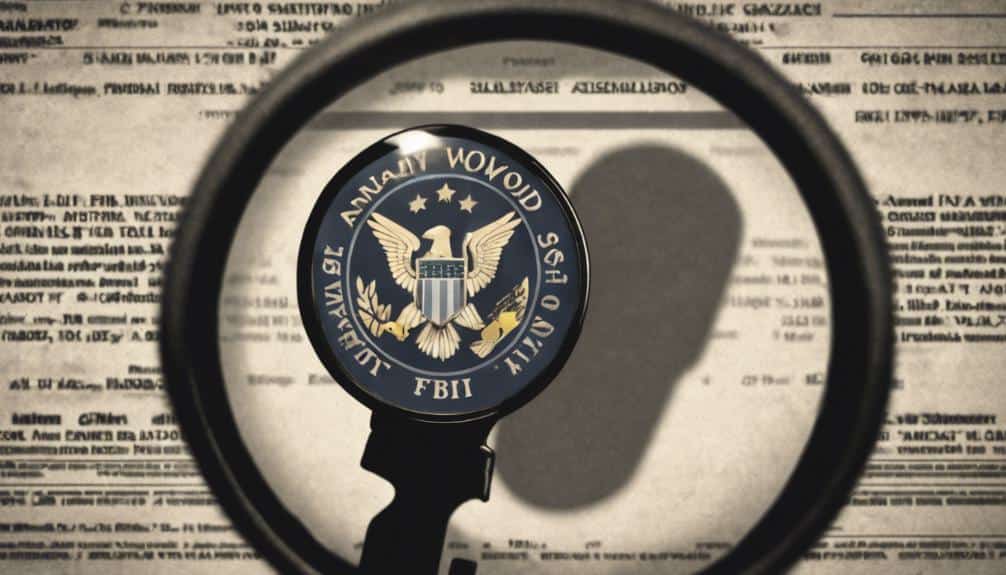FBI Exploits Weapon Data With Amazon Rekognition

The FBI’s Project TYR represents a groundbreaking collaboration with Amazon, utilizing the tech giant’s Rekognition technology to enhance the digital analysis of weapon-related data. This initiative employs advanced computer vision capabilities to streamline the identification process, aiming to bolster law enforcement efforts. However, it faces scrutiny over privacy concerns, including potential misuse of facial recognition, invasive data collection, and a lack of transparency. These issues underscore the delicate balance between leveraging technology for public safety and safeguarding personal privacy. As the project pushes the boundaries of surveillance, it underscores the critical need for oversight and a cautious approach. Exploring further reveals the intricate details of this collaboration and its implications.
Main Points
- The FBI’s Project Tyr uses Amazon’s Rekognition for advanced digital analysis of weapon data.
- The project aims to enhance the identification process of weapons through computer vision.
- Concerns arise over the potential misuse and privacy issues of facial and object recognition technology.
- The initiative demonstrates the FBI’s commitment to leveraging technology for public safety.
- Critics argue the need for strict oversight to balance technological advancements with privacy rights.
Project Tyr Overview
Initiated by the Federal Bureau of Investigation, Project TYR leverages Amazon’s Rekognition technology to enhance the identification of firearms and individuals, aligning with the agency’s commitment to public safety and constitutional rights.
This innovative project utilizes advanced computer vision capabilities, focusing on digital analysis to extract critical insights from images and videos.
Although Amazon has previously paused its facial recognition technology for law enforcement applications, Project Tyr employs other facets of Rekognition, bypassing concerns related to facial recognition.
The FBI’s approach underscores a strategic shift towards implementing cutting-edge technology to bolster investigative efforts. Through digital analysis, Project Tyr aims to streamline the identification process, thereby increasing efficiency while upholding the principles of justice and privacy.
Privacy Concerns

Despite the FBI’s assurances, the deployment of Amazon Rekognition technology in Project TYR has sparked significant privacy concerns among digital rights communities. These concerns primarily revolve around:
- Potential misuse of facial recognition: Despite current limitations, the fear that future iterations could incorporate facial analysis looms large.
- Invasive data analysis: The depth of data scrutiny raises alarms about individual privacy breaches.
- Scope creep: The worry that the initial scope of analyzing weapon data could expand to more personal information.
- Lack of transparency: Concerns that the public may not be fully informed about how their data is analyzed and used.
Together, these points underscore the delicate balance between leveraging technology for public safety and safeguarding personal privacy.
Surveillance Expansion

The expansion of surveillance capabilities, such as those demonstrated by Project TYR, raises significant questions about the balance between security and privacy rights. With the FBI’s adoption of Amazon’s Rekognition technology for identifying weapons and potentially harmful content, the necessity for rigorous government oversight becomes paramount.
This technology, while innovative, necessitates a cautious approach to guarantee data security and the protection of citizens’ privacy. The involvement of high-powered computer vision capabilities in law enforcement activities must be transparent and subject to checks and balances.
As surveillance technologies evolve, the dialogue around their use must also advance, ensuring that advancements in security do not come at the expense of fundamental privacy rights. The collaboration between technology companies and law enforcement agencies underscores the critical need for policies that safeguard civil liberties while enhancing public safety.
Youth Shooting Support

Financial support from the MidwayUSA Foundation substantially bolsters youth shooting sports programs across the nation, providing nearly $5.4 million in grants to support the development and participation of young shooters. This initiative plays a pivotal role in nurturing the next generation of enthusiasts in the shooting sports community.
Here are key benefits of this financial assistance:
- Enhanced Equipment Access: Helps procure necessary gear and supplies.
- Training and Education: Funds coaching and educational materials for youth.
- Event Sponsorship: Supports participation in competitions and events.
- Facility Improvements: Aids in upgrading shooting ranges and practice areas.
These efforts underscore the foundation’s commitment to youth development through structured support, ensuring that young shooters have the resources they need to pursue their passion safely and effectively.
Firearms Innovations

Building on the foundation of supporting youth in shooting sports, a focus on firearms innovations reveals the industry’s commitment to advancing technology for safety and efficiency. These weapon advancements are not just enhancing the experience for enthusiasts but also elevating the standards in shooting competitions.
| Innovation | Benefit | Application |
|---|---|---|
| Smart Guns | Safety | Personal Use |
| Digital Sights | Accuracy | Competitive Shooting |
| Silencer Technology | Noise Reduction | Hunting/Recreational |
| Biometric Locks | Security | All Firearms |
Embracing these innovations safeguards that firearms remain a tool for sport and defense, aligning with modern expectations of safety and performance. As the industry evolves, these advancements play a critical role in promoting responsible weapon ownership and usage, particularly in competitive settings.
Frequently Asked Questions
How Does Project Tyr Differentiate Between Legally Owned Firearms and Those Used in Criminal Activities?
Project Tyr is a pioneering initiative that employs advanced technology to scrutinize firearms. The aim is to distinguish between those legally owned and those implicated in criminal activities. Central to this endeavor is a meticulous analysis of weapons’ characteristics and contextual data. This ensures respect for gun ownership rights while addressing privacy concerns.
This methodological approach enables precise identification, supporting law enforcement efforts to protect public safety without infringing on individual rights.
What Measures Are in Place to Ensure That Data Collected Through Amazon Rekognition Does Not Lead to the Profiling of Innocent Individuals?
To address concerns surrounding privacy and ethical implications, rigorous measures are implemented to safeguard against profiling innocent individuals.
For instance, a hypothetical scenario could involve an audit trail system that tracks and justifies each search query against specific criteria. This system guarantees transparency and accountability, addressing privacy concerns directly.
Additionally, strict access controls and regular reviews of the technology’s use help mitigate potential ethical implications, ensuring a balanced approach to innovation and privacy protection.
How Will the FBI Address the Potential for False Positives in Weapon and Explosive Identifications Through Rekognition, and What Recourse Will Affected Individuals Have?
To mitigate the potential for false positives in weapon and explosive identifications through Rekognition, the FBI integrates ethical considerations and acknowledges technological limitations. Affected individuals will have recourse through established oversight mechanisms designed to address inaccuracies.
This approach underscores the FBI’s commitment to balancing innovative technology use with the protection of civil liberties, ensuring a streamlined process for rectifying errors and upholding the integrity of investigations.
In What Ways Does the Midwayusa Foundation Ensure That Its Grants for Youth Shooting Sports Do Not Inadvertently Support Groups That May Misuse Firearms?
The MidwayUSA Foundation guarantees its grants for youth shooting sports are used responsibly through strict grant criteria focused on promoting safe and educational engagement with firearms.
By emphasizing youth engagement in shooting sports as a positive developmental activity, the Foundation meticulously reviews applicants to ensure alignment with its mission of fostering responsible firearm use and safety education.
This approach helps prevent the support of groups that may misuse firearms, thereby upholding the Foundation’s commitment to safety and education.
How Does the Development of New Firearms Technologies, Such as Those Introduced by SIG Sauer and Smith & Wesson, Impact the Effectiveness and Objectives of Project TYR?
The development of new firearms technologies by companies like SIG Sauer and Smith & Wesson, featuring manufacturing advancements, greatly challenges and enhances Project TYR’s objectives. With the introduction of sophisticated weaponry, the project must adapt its analytical tools to stay ahead.
Global regulations also play an essential role in shaping the approach towards identifying and tracking such advancements. This dynamic landscape requires continuous innovation and collaboration to uphold safety standards and achieve the project’s goals effectively.
Conclusion
To wrap up, Project TYR stands at the crossroads of innovation and controversy, wielding Amazon’s Rekognition technology as a double-edged sword in the fight against crime.
While it promises to revolutionize law enforcement capabilities by identifying firearms and associated individuals with unprecedented accuracy, it simultaneously stirs a cauldron of privacy concerns and ethical debates.
As society navigates this digital labyrinth, the balance between security and civil liberties remains a paramount quest, demanding careful scrutiny and continual dialogue to safeguard the preservation of fundamental rights.


